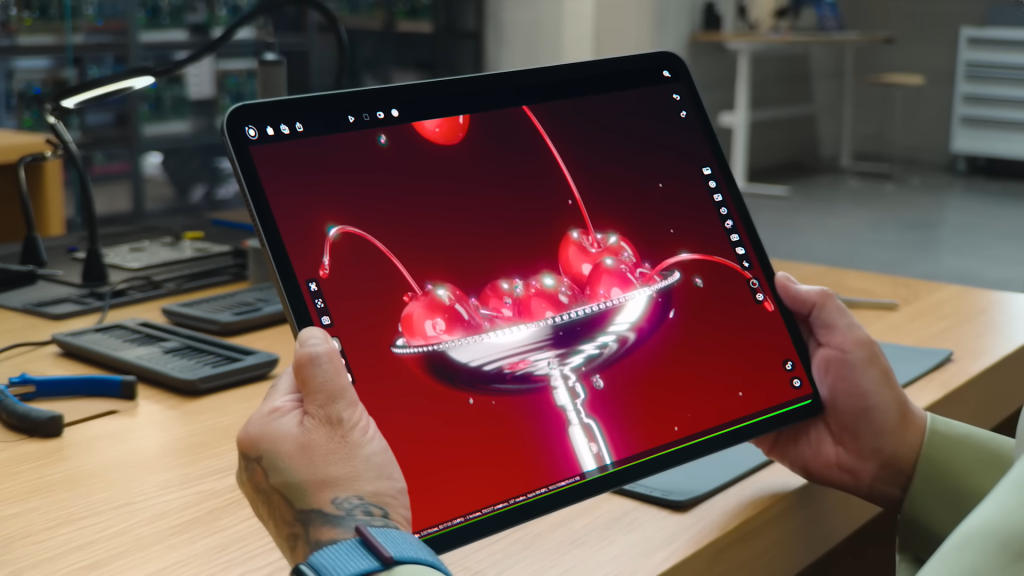OLED iPad Air is set to introduce as early as 2026. This anticipated upgrade comes as part of Apple’s ongoing efforts to enhance its iPad lineup with advanced display technology, moving away from the traditional Liquid Retina IPS LCDs currently used in the iPad Air models.
OLED Technology Transition
The shift to OLED (Organic Light Emitting Diode) displays is significant for Apple, as it promises to deliver superior color accuracy, contrast ratios, and energy efficiency compared to LCD screens. OLED technology allows for deeper blacks and more vibrant colors, which can enhance the overall user experience, especially for tasks involving multimedia consumption, gaming, and graphic design.The report, originating from South Korea’s The Elec, highlights that Samsung Display is expected to be the primary supplier for the new OLED screens. These displays will utilize a single-stacked OLED configuration, differing from the Tandem OLED technology found in the latest iPad Pro models. This choice is likely influenced by cost considerations and the target market for the iPad Air, which is positioned as a more affordable alternative to the Pro line.
Timeline and Specifications
Originally, there were speculations that the OLED upgrade for the iPad Air might not occur until 2028. However, recent updates have accelerated this timeline, suggesting that Apple is now aiming for a 2026 launch. This aligns with Apple’s strategy to refresh its product lineup regularly and incorporate cutting-edge technology to maintain competitiveness in the tablet market.The iPad Air received a minor update earlier this year, introducing new 11-inch and 13-inch models powered by the Apple M2 chip. Despite these improvements, the models still featured the older Liquid Retina IPS LCD technology. The upcoming OLED iPad Air is expected to offer a more substantial upgrade in display quality, making it an attractive option for consumers looking for high-performance tablets.
Broader Implications for Apple’s Product Line
The introduction of OLED displays in the iPad Air could also signal a broader transition for Apple’s tablet lineup. Reports suggest that Apple may extend OLED technology to other devices, including the iPad Mini, which is rumored to feature an 8.7-inch OLED display. This move would further enhance the visual experience across Apple’s iPad range, making OLED technology a standard feature in future models.Furthermore, the integration of OLED displays could enhance the appeal of the iPad Air in educational and professional settings, where color accuracy and display quality are crucial. As remote work and digital learning continue to thrive, the demand for high-quality displays in tablets is likely to increase, positioning the iPad Air favorably in the market.
Competitive Landscape
As Apple prepares to launch its OLED iPad Air, it faces competition from other tablet manufacturers that have already adopted OLED technology. Companies like Samsung and Microsoft have been incorporating OLED displays into their tablets, offering consumers a variety of options. Apple’s entry into the OLED market could help it regain a competitive edge, particularly among users who prioritize display quality.The transition to OLED is not only about enhancing user experience but also about keeping pace with industry trends. As more consumers seek devices with superior display capabilities, Apple’s commitment to integrating OLED technology into its products will be crucial for maintaining its market share.
Consumer Expectations
With the anticipated launch of the OLED iPad Air, consumer expectations are likely to rise. Users are eager for improvements in display technology, particularly in areas such as brightness, color reproduction, and battery efficiency. The move to OLED is expected to address these concerns, offering a more immersive experience for users engaged in creative work, gaming, and media consumption.Moreover, the pricing strategy for the OLED iPad Air will be a critical factor in its success. Apple has historically positioned its products at a premium price point, and the introduction of OLED technology may further elevate costs. However, if Apple can balance performance enhancements with competitive pricing, it could attract a broader audience, including those who may have previously opted for lower-cost alternatives.
Conclusion
The anticipated launch of the OLED iPad Air in 2026 marks a significant step forward for Apple’s tablet lineup. By integrating OLED technology, Apple aims to enhance the visual experience for users while remaining competitive in a rapidly evolving market. As the company prepares for this transition, consumers can look forward to a new generation of iPads that promise improved display quality, making them more appealing for a variety of applications.As the launch date approaches, further details regarding specifications, pricing, and additional features are expected to emerge. For now, the prospect of an OLED iPad Air has generated excitement among Apple enthusiasts and tech consumers alike, setting the stage for what could be a transformative year for Apple’s tablet offerings.


















